O ολοκληρωμένος έλεγχος του οχήματος είναι υπόθεση ζωής... είναι υπόθεση της KTEO AUTOSAFE
Get in touch
- info@autosafe.gr
- 2310751241
- Δευ - Παρ: 8:00 - 18:00 | Σάβ: 8:00 - 16:00
TYPE KTEO CONTROL
-
Autosafe ΚΤΕΟ > TYPE KTEO CONTROL
TECHNICAL INSPECTION INCLUDES DETAILS FOR CARS
1. VISUAL INSPECTIONS
- Vehicle Identity Check (Chassis and Engine Number, License Plate).
- Windshield and glazing control (condition, visibility, suitability).
- Check body, doors and bumpers (fastening, wear, oxidation).
- Colour control, tow-bar, spoiler, membranes.
- Light control - reflectors and electrical equipment (visibility).
- Mirror control (visibility, mounting).
- Check wheels, tires and spare wheel (suitability, dimensions, condition).
- Control of Axles - Wheels - Spare Wheel - Tires - Suspension.
- Engine check (leaks).
- Battery and electrical installation status check.
- Steering system control (Power steering pump, piping).
- Check other equipment (fire extinguisher, triangle, pharmacy).
- Cabin control (steering wheel, speedometer, seat belts, seats, horn).
- Pollutant emission control.
2. EXHAUST GAS CONTROL
The issue of air pollution for the protection of the environment and the effort to reduce it is an issue that concerns all drivers. In order to control vehicle emissions, the state has set emission limits that must be checked semi-annually or annually and each vehicle must carry the Exhaust Control Card. This test is performed by means of an exhaust gas analyser for petrol and LPG vehicles and a smoke meter for diesel vehicles. The vehicle must be leak-free and leak-free.
The smoke meter measures the amount of soot contained in the exhaust and is responsible for the dark smoke emitted by diesel vehicles. During the process of measuring the exhaust gases of a vehicle, the engine comes to normal operating temperature as well as the catalytic converter, if it is a vehicle of anti-pollution technology. The vehicle exhaust must be watertight, with no leaks. Responsible for this measurement of emitted pollutants have been appointed bodies such as the Ministry of Environment, Physical Planning and Public Works and the KTEO.
3. ALIGNMENT CHECK (CONVERGENCE-DIFFERENCE)
The Convergence-Deviation Measurement is of the utmost importance. The Convergence-Deviation Measurement of a vehicle is performed through an instrument called a deviation meter. It is a flat metal plate one meter long, over which the front left wheel of the vehicle passes while the vehicle is in full alignment with the guidelines on the floor. Before the wheels slip, the tire pressure is checked. Keeping the alignment of the course is synonymous with the safety of the passengers, but also with the longevity of the systems and components of the two-wheeler. Finally, a vehicle that deviates from the straight, wears the tire tread unevenly and strains the arms as well as the joints of its steering system.
4. SUSPENSION CONTROL
The suspension system is a device which connects the frame of the vehicle wheels. The suspension system ensures comfort for the occupants of the vehicle, stability during the course as well as reduction of vibrations. During the control of the suspension system, the following are checked:
- Adhesion of each Wheel
- One-sided Adhesion
- General Inspection of Springs - torsion bars - shock absorbers (corrosion - risk of joints - cineblock condition - leaks)
5. CONTROL OF THE BRAKING SYSTEM
The vehicle braking system is responsible for slowing down or immobilizing our vehicle. When checking the braking system, the following are checked:
- Maximum braking force
- One-way braking
- Variation of braking forces
- Brake pump, hydraulic system and fluid level as well as flexible and rigid piping for general condition - leaks
6. LIGHT CHECK
The correct operation of the lights of a vehicle ensures clarity in our field of vision, the timely warning of other drivers for a possible change of course or our sudden deceleration. Also, the lights determine the position of our vehicle on the road at night. During the technical inspection, the operation of all the lights of the vehicle is checked as well as the operation of the control switches of the above. The test is performed visually by the controller, but also with the help of an instrument called a light meter.
- The correct operation of all the lights of the vehicle
- The right colouring
- The intensity of the dipped-beam headlights
- The correct aiming of lights in which the deviation of the light beam emitted by the vehicle, along the vertical axis, in relation to the inclination indicated by the manufacturer at the traffic lights is measured.
- In addition, the horizontal deviation of the lantern along the horizontal axis is measured, whether the lantern is turned to the left or to the right.
7. VIEWING PIT
- System Control Manager (Hanger-Half Bar-Tie Rod for gambling leaks).
- Transmission Control (Suspension - Differential - Half Taxes - Belt - Wheel Bearing for good fastening - leaks - Noises).
- Suspension System Check (Shock Absorber-Torsion Rods - Zanfor- Springs or Springs - Tires - Cine block for gambling - leaks.
- Chassis General Inspection for oxidations - rots.
- Exhaust System Check (catalytic converter - sensors - piping cisterns for oxidation - leaks fixing).
TECHNICAL INSPECTION INCLUDES MOTORCYCLES
1. VISUAL INSPECTIONS
- Vehicle Identity Check (Chassis and Engine Number, Licence Plate).
- Colour control.
- Light control - reflectors and electrical equipment (visibility).
- Mirror control (visibility, mounting).
- Check wheels, tires and spare wheel (suitability, dimensions, condition).
- Tire Control - Suspension.
- Engine check (leaks).
- Battery and electrical installation status check.
- Steering system control (Power steering pump, piping).
- Cabin control (steering wheel, speedometer, seat belts, seats, horn).
- Pollutant emission control.
2. EXHAUST GAS CONTROL
The issue of air pollution for the protection of the environment and the effort to reduce it is an issue that concerns all drivers. In order to control the emissions of the two-wheelers, the state has established emission limits that must be checked annually, and each motorcycle must have the Exhaust Control Card and Sound Card (coming soon). This test is performed via an exhaust gas analyser for petrol motorcycles.
Exhaust gas analyser measures in addition to carbon monoxide (CO) During the process of measuring the exhaust gases of a two-wheeler the engine comes to normal operating temperature as well as the catalytic converter, if it is a motorcycle of anti-pollution technology. The exhaust of the two-wheeler should be watertight, without leaks.
Responsible for this measurement of emitted pollutants have been appointed bodies such as the Ministry of Environment, Physical Planning and Public Works and the KTEO.
3. SUSPENSION CONTROL
The suspension system is the device that connects the frame of the motorcycle to the wheels. The suspension system ensures comfort for the passengers of the two-wheeler, stability during the course as well as reduction of vibrations.
During the control of the suspension system, the following are checked:
General Inspection of Springs-torsion bars – shock absorbers (corrosion-risk of expiration of joints – cine block condition-leaks).
4. CONTROL OF THE BRAKING SYSTEM
The braking system of the two- wheeler Is responsible for reducing the speed or immobilizing our two-wheeler. When checking the braking system, the following are checked:
Maximum braking force
Variation of braking forces
Brake pump, hydraulic system and fluid level as well as flexible and rigid piping for general condition – leaks
5. LIGHT CONTROL
Proper operation of the lights of a two-wheeler ensures clarity in our field of vision, the timely warning of other drivers for a possible change of course or our sudden deceleration. Also, the lights determine the position of our bike on the road at night.
During the technical inspection, the operation of all the lights of the vehicle is checked as well as the operation of the control switches of the above. The test is performed visually by the controller, but also with the help of an instrument called a light meter.
In detail, at this stage it is checked:
- The correct operation of all the lights of the motorcycle
- The right colouring
- The intensity of the dipped-beam headlights
- The correct aiming of lights in which the deviation of the light beam emitted by the motorcycle is measured, along the vertical axis, in relation to the inclination indicated on the traffic lights by the manufacturer. In addition, the horizontal deviation of the lantern along the horizontal axis is measured, whether the lantern is turned to the left or to the right
6. LIFTING RAMP
- System Control Address (Steering Wheel-Cross)
- Transmission Control (Suspension-Gears-Chain - Differential - Belt)
- Suspension System Check (Shock Absorber Springs - Forks - Cine block for Leaks - Leaks)
- General Framework-Framework Inspection
- Exhaust System Check (catalyst-sensor-cistern for oxidation-leaks-fixing)

- West Thessaloniki, Karavaggeli 68, 57009 Thessaloniki
- Lagyna: 15th km. Thessaloniki - Kavala
- 2310751241
- info@autosafe.gr
Newsletter
Subscribe to our Newsletter to be the first to be informed about KTEO AUTOSAFE.

